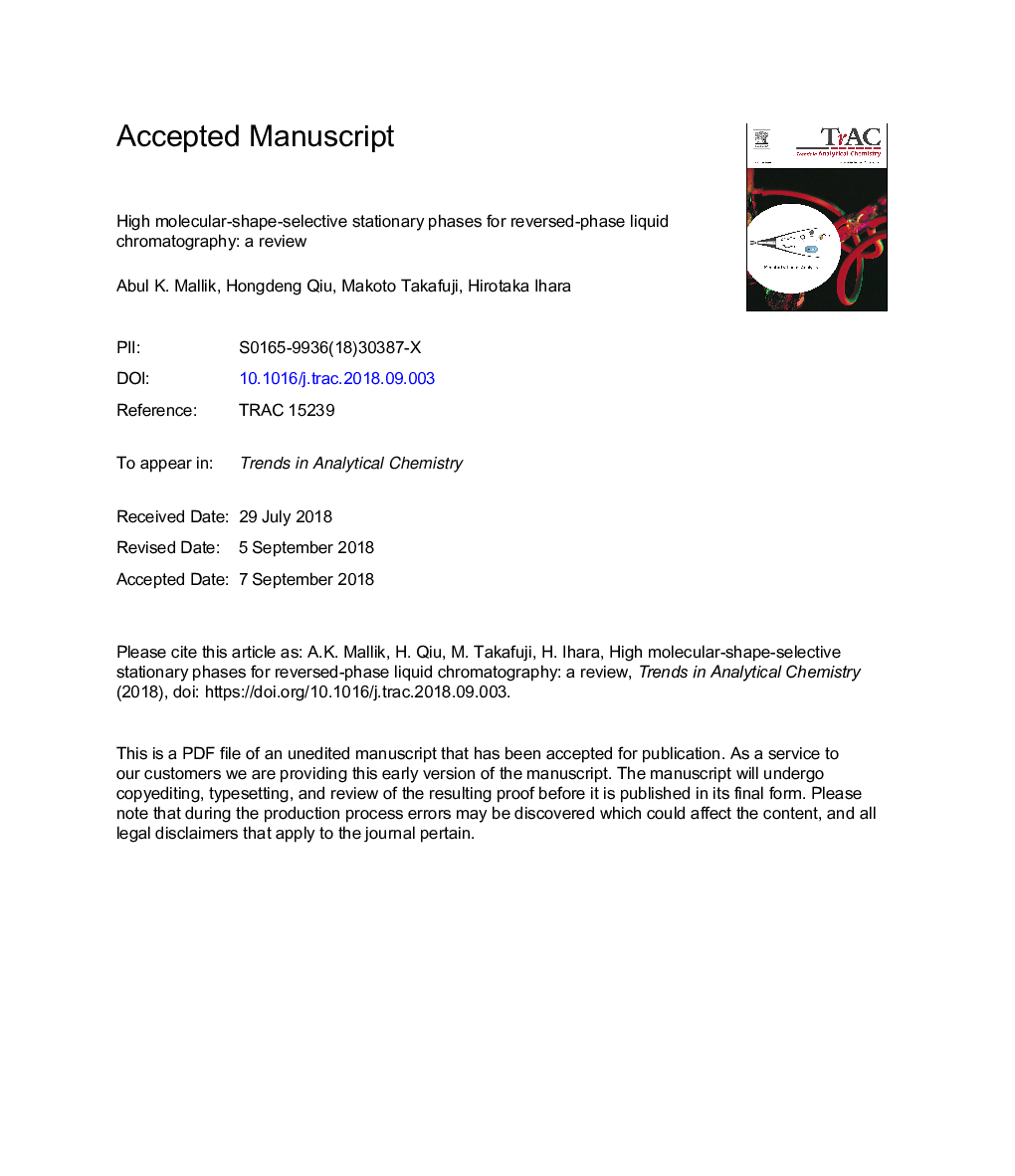| Article ID | Journal | Published Year | Pages | File Type |
|---|---|---|---|---|
| 11263642 | TrAC Trends in Analytical Chemistry | 2018 | 45 Pages |
Abstract
Reversed-phase liquid chromatography (RPLC) is the most popular separation mode in high-performance liquid chromatography (HPLC). The design and synthesis of new separation materials to meet growing demands has always been a major concern to enhance the selectivity of stationary phases. Therefore, variety of new organic stationary phases for columns has been a key factor in the development of HPLC as one of the major separation tool. This review summarized the development trend of stationary phases and their characterizations with improved shape selectivity especially for the separation of shape-constrained isomers. The design of several novel stationary phases, based on the molecular-shape recognition concept, is also briefly reviewed along with the applications. Up-to-date information about the newly developed phases and the driving forces for the high shape selectivity will also be focused in this review.
Keywords
Related Topics
Physical Sciences and Engineering
Chemistry
Analytical Chemistry
Authors
Abul K. Mallik, Hongdeng Qiu, Makoto Takafuji, Hirotaka Ihara,
